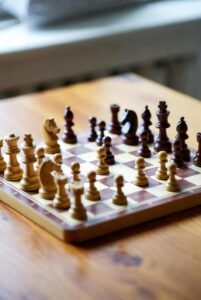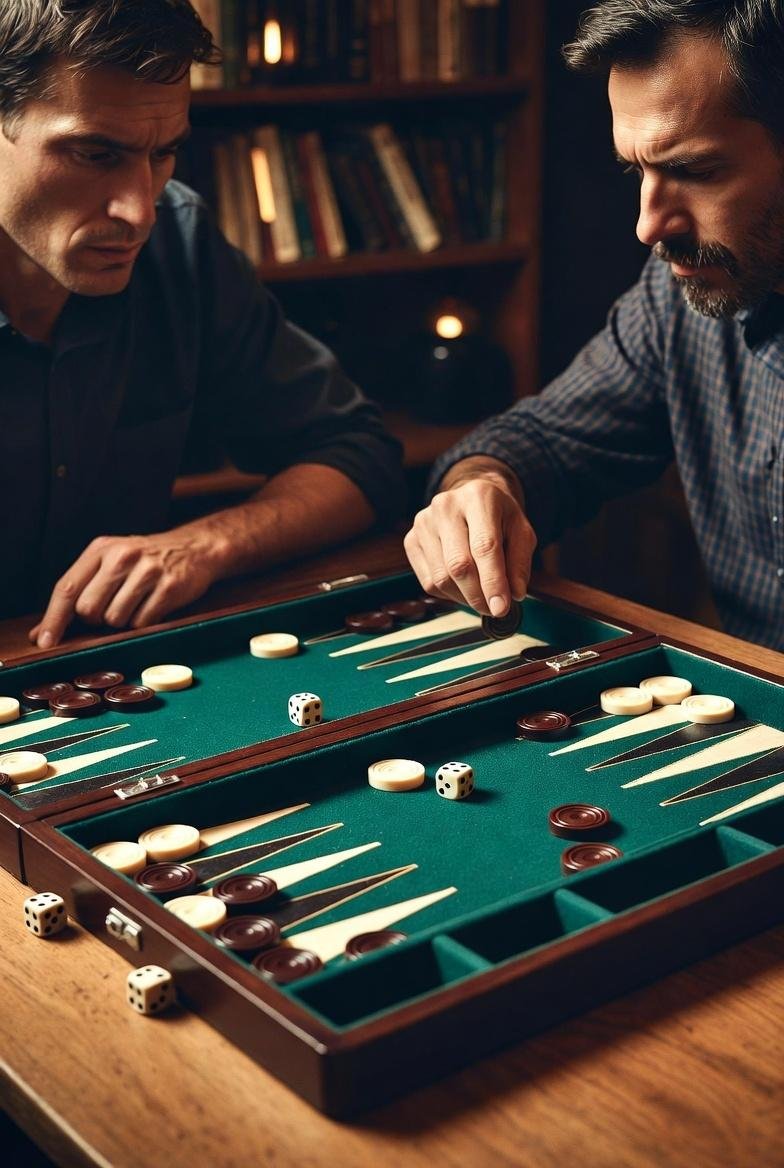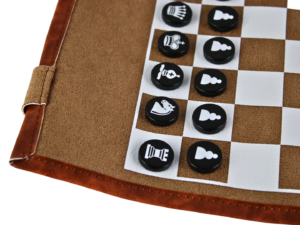
How to Use the Doubling Cube in Backgammon: A Guide?

TL;DR:
- The doubling cube in backgammon is not used for moves but to double the stakes of the game when one player believes they have an advantage.
- A proposed 'double' can be accepted or declined by the opponent. Accepting passes control of the cube to them while declining forfeits the game with the current stake to the first player.
- Doubling cube should ideally be used when the player has a strong chance of winning, for instance, when the opponent's pieces are vulnerable or the player has a positional advantage.
- Risk assessment, including opponent's possible response, is crucial before doubling. If uncertain, it's better to double early.
- Doubling decisions should also consider the score, pip count, game flow, board setup, and opponent's attitude towards doubling.
Unleash your inner strategist! Master the mysteries of the doubling cube in backgammon with this comprehensive guide. Learn rules, strategies, and everything in-between. Let's double the excitement, one cube spin at a time. Ready to dive into the dramatic world of backgammon doubling? Read on!
What is the Doubling Cube in Backgammon and How Does it Work?
Backgammon involves a dash of luck and a pinch of strategy. One strategic tool is the doubling cube. This six-sided dice ranges from 2 to 64. But it's not for making moves! Instead, it changes your game's stakes.
What is the Doubling Cube used for?
A backgammon game begins with the doubling cube on the side, showing the number 64, which means 1 in play. This cube comes into play when you as a player feel you have an edge over your opponent. By proposing a 'double', the game's stakes double, turning a normal point game into a two-point game and so forth.
When you propose a double, the other player has two options – accept or decline. If they accept, control of the doubling cube shifts to them, and they can choose to redouble later in the game. If they decline, they forfeit the game, and you receive the current stake.
What Makes the Doubling Cube Unique in Backgammon?
The doubling cube adds an extra layer of strategy to backgammon. It's not just about advancing your markers and hitting your opponent's blots (isolated markers); it's about assessing game dynamics and knowing when to raise the stakes. The cube puts you in the driver's seat, amplifying the thrill of the contest. You can find more detailed information on it here.
Understanding how to use the doubling cube in backgammon, having it explained thoroughly, provides a whole new layer of depth to the gaming experience. A confident, well-timed double can swing a game in your favour and maximize your points. It's like playing chess in two dimensions!
When Should You Utilize the Doubling Cube in Backgammon?
When you play backgammon, using a doubling cube can turn the tide of the game in your favour. This small cube, marked with powers of two up to 64, is a powerful tool.
What are the Strategic Situations to Consider Doubling?
One of the most crucial backgammon doubling cube rules lies in identifying ideal doubling moments. Ideally, it’s best to double when you have a strong chance of winning. This might be when you have several of your opponent’s pieces on the bar or when the pieces are scattered and vulnerable. Deciding when to double in backgammon often hinges upon understanding your positional advantage.
However, it's not all about your position. You also need to assess your opponent's potential reply. If you think they're likely to decline, it could be a perfect time to double.
How to Evaluate Potential Risks and Gains of Doubling?
Learning how to use the doubling cube effectively involves knowing when to take risks. But when should you double in backgammon? It's often when the potential reward outweighs the risk. It’s a balance. If you’re too far ahead, your opponent may decline your double. But if you’re only slightly ahead, you risk giving your opponent a double at a later stage.
A useful trick is to follow this idea: if you're unsure, it's better to double too early than to do it too late. This way, you seize the initiative and put your opponent under pressure.
Understanding the backgammon doubling cube rules, knowing when to double, and having the ability to evaluate risks versus rewards can significantly improve your game. It’s about taking calculated risks and recognizing strategic moments.
Backgammon is a game of skill, strategy and a little bit of luck. By using your doubling cube wisely, you can add another layer of depth to your game. Keep these tips in mind for your next game and see how the doubling cube can shift the odds in your favour. Happy gaming!
Understanding the Strategy Behind Doubling in Backgammon
Strategic playing forms the soul of backgammon. It helps you make stirring comebacks, even when chips are down. But how does trick play tie in with the doubling cube?
How Can Mathematical Strategy Aid in Doubling Decisions?
Math can be a buddy to your cube! After all, backgammon cube strategy sits on score, pip count, and likelihood of winning. A good grasp of math helps us make wise doubling calls.
Score, or points left to win, shapes our doubling moves. Imagine you're down 1-4 in a 5-point match. Only a double can pull you through. A high risk, you say? But remember, no guts, no glory.
Pip count, or sum of moves to bear off all checkers, comes next. If you're leading, you could mull over doubling. If your count is less by 15 percent or more, it might bode well for you.
However, don't hinge it all on math. Be sure to factor in the game flow, too. Constant swings in your favor might reveal an excellent time for a cube twist.
Our handy blog explains the math in an easy-to-digest manner. It can help beef up your game.
What Factors Should Influence Your Doubling Decisions?
In a doubles match, more than just math kicks in. Your gut, the board setup, and your foe's cubes can all steer your hand.
Gut instinct, honed through play, chimes in a lot. If you sense a shift in the game in your favour, play your cube!
The board setup, or the state of your checkers, has a bearing as well. If your checkers are not meshed well, double with care. Still, if a well-aimed double can shake your foe, it's worth a punt.
Your rival's cube actions also sway your choice. If your rival isn't keen on doubles, it's your chance to twist the knife. A swift cube tactic can keep them on the back foot, nudging victory your way.
So, armed now with this knowledge, are you game for a spin on the board? Get your checkers ready, and let's roll!
Conclusion
We've delved into the importance and intricacies of the doubling cube in backgammon, covering how it works, when to utilize it and the strategies behind it. With better understanding, you're more prepared to tap into the heightened excitement and strategic depth this aspect adds to every game. Remember, no risk, no victory! Keep honing your doubling cube prowess.





